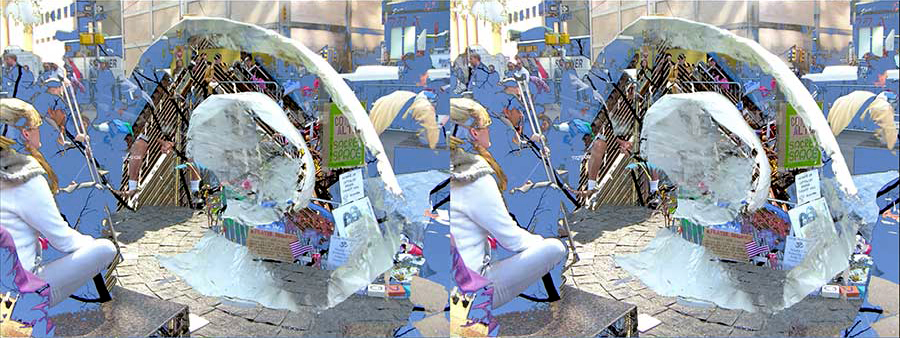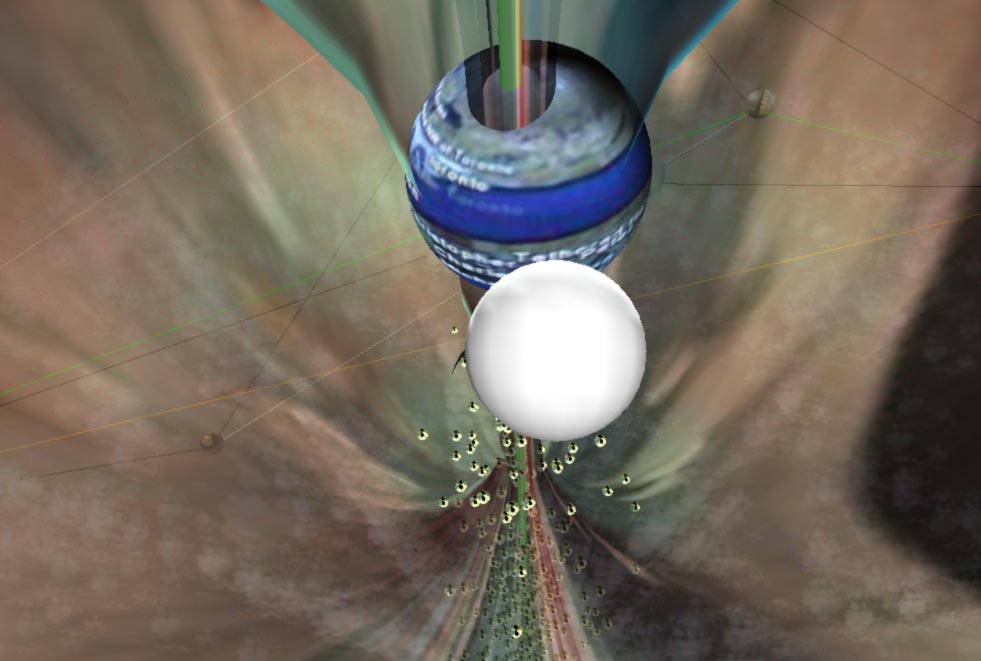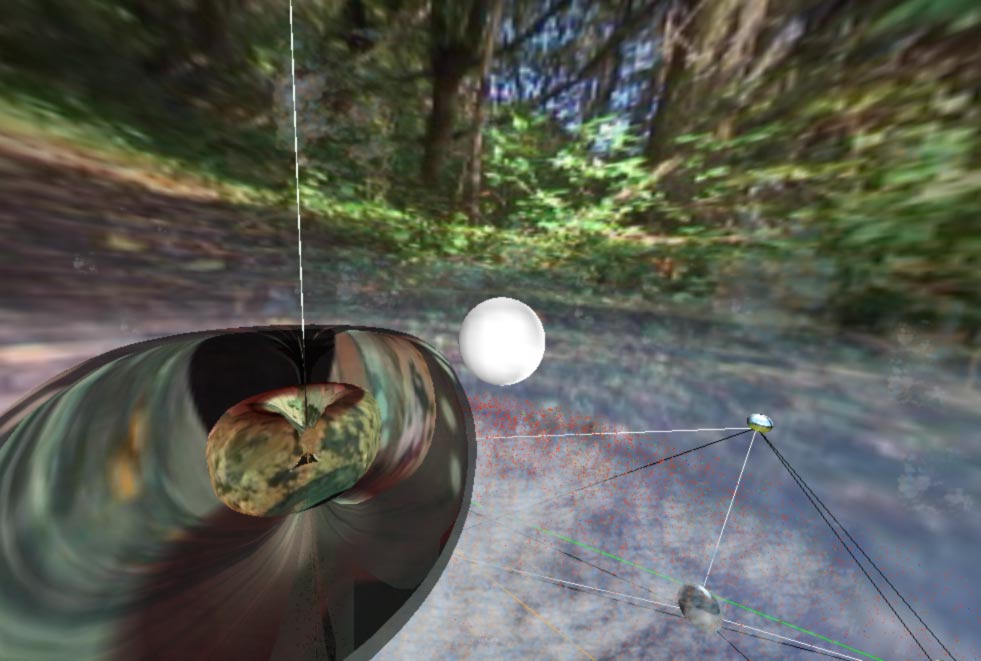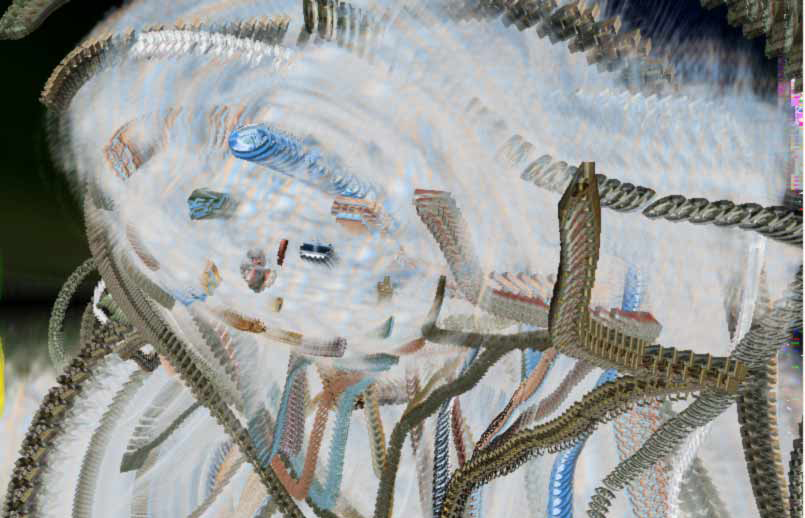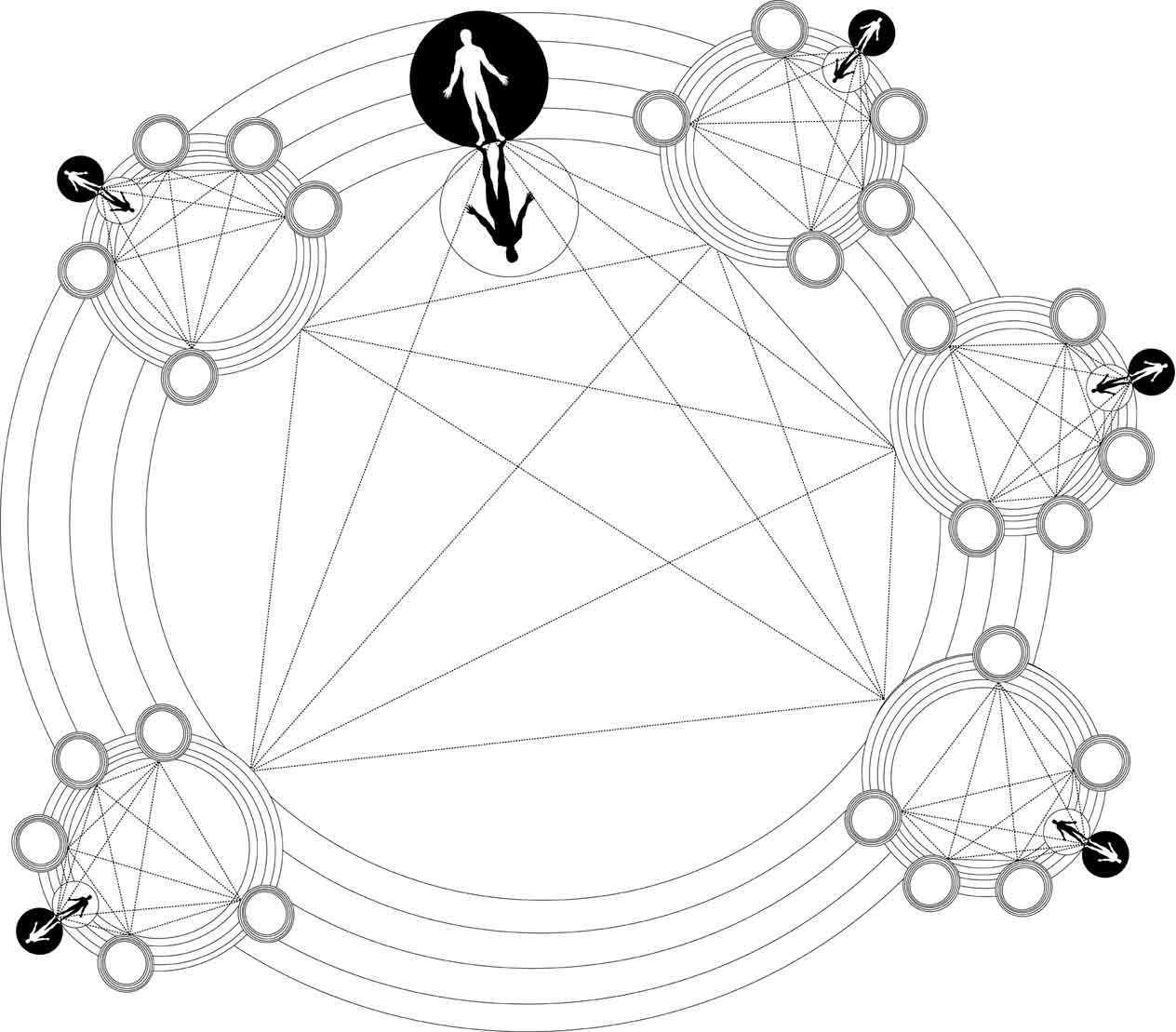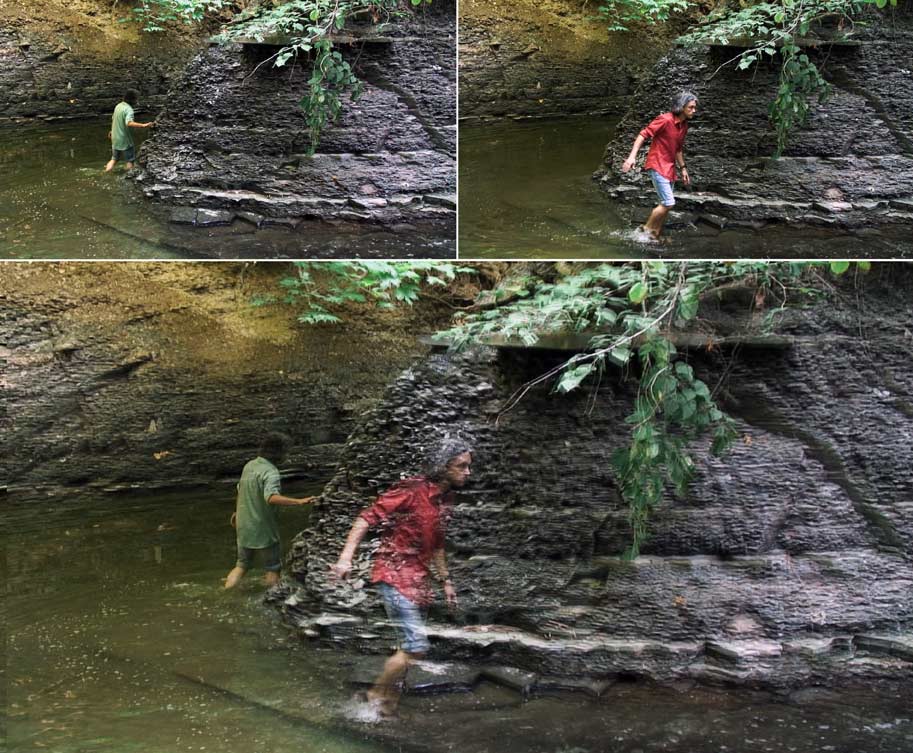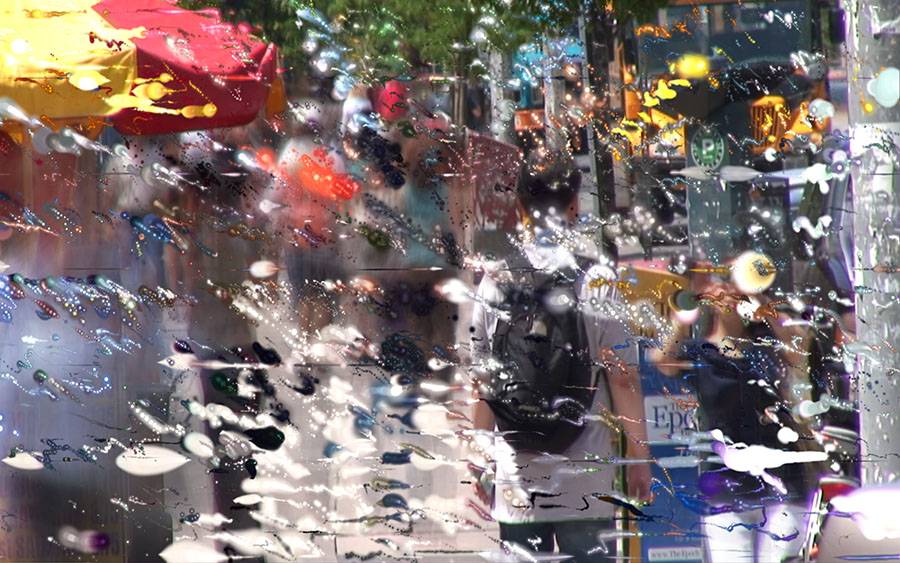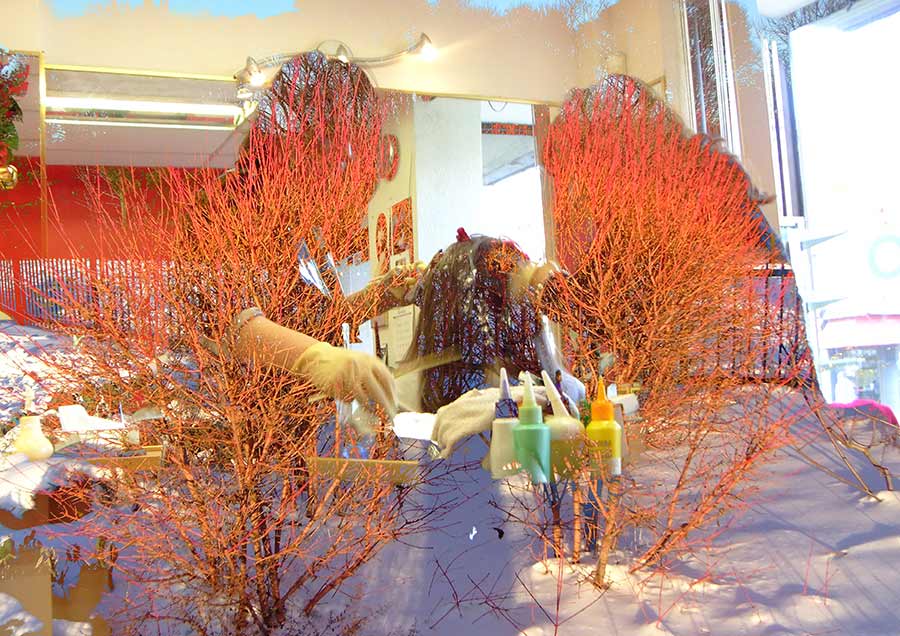Willy Le Maitre: The Dream of Information
For the past dozen years, Canadian artist Willy Le Maitre has been using stereoscopic imagery as a means of exploring the intersections of exterior and interior vision. In his screen-based performances — which thrust the viewer into a space that the artist calls Edia, a “cosmology of digital space” wherein “the self [is] no longer confined to an individualist notion” — and series of 3D videos, Le Maitre insists that stereoscopy has the ability not only to mirror the function of eyesight, but to open us up to possibilities that were only previously visible in the mind’s eye. Le Maitre’s work is inspired by the writings of Oxford zoologist Andrew Parker, who posits that the explosion of biodiversity in the Cambrian period of 500 million years ago was brought about by the development of vision in primitive animals — that vision, in essence, provided the evolutionary inspiration for animals to take on a plethora of new forms. Accordingly, in his stereoscopic work Le Maitre aims to move beyond merely representing the world to reimagining it.
Shooting with moving and still 3D cameras, Le Maitre takes the resulting imagery and manipulates it digitally, often letting a process develop of its own accord. Documentary images of Toronto neighbourhoods and NYC’s Zacotti Park during Occupy Wall Street blend and reshape themselves as recognizable landmarks fracture into associative patterns; texture mapping transforms recorded environments into topologies of space and pixels are set free to take on lives of their own, becoming brush strokes that “paint the dance of appearances.” (Free Screen, TIFF Lightbox, March 3, 2016)The resulting visions are ecstatically surreal: beautiful and amusing apparitions that visualize an ecology of human-digital interconnectivity and extend the possibilities of the virtual world. Chris Kennedy (Free Screen, TIFF Lightbox, March 3, 2016)
for clips and stills see:
http://willylemaitre.com/s3d.html
Outlook Expressed
Stereo-3d HD video, 4:30 minutes, 2011
Seen from the perspective of a world that stands on its head, the sky is depicted as ground. On the surface, remembering the horizon and how the planet first looked when we saw the whole thing. We’re submerged in the vast blue expanse of space. The short stereo 3d video progresses through depictions of entities in environments, bounded in mutual reflection. The interaction pertains to a sense of looking as primal form of transformation.
The short stereo 3d video presents us with two spherical entities that progress through various spaces, their surface appearance responds to environment – they join occasionally. The frame moves from the surface of our sphere up to the sky – I shot this part of the video during a Critical Mass ride during the G20 weekend in Toronto in 2010 – there was this feeling of euphoria there – space seemed to open up, I imagined the unity that astronauts speak when they see the earth. The imagery and sound are permutations from what is implied by Schumann Resonances – the frequency generated by electromagnetic standing waves in the atmosphere, formed by the surface of the earth and the ionosphere.
Occupy Image
Stereo-3d HD video, 13 minutes, 2012
Surfaces open up and become habitable, images occupied. Each image overlaid on another, in a continual drift and dissolve through this new baroque cage.
The title Occupy Image relates to the Occupy movements in two ways. The first sense as literal; opening with images taken in Zacotti Park in October 2011. As the sequence of dissolving stills progresses from the protest images and into seemingly unrelated imagery, vacation snapshots and urban amusement – The second and more significant sense of Occupy as word play becomes evident. The pun becomes sensible in reflection on the new varieties of digital experience regarding image and spectator agency.
Depth perception is variably shaped by the shifting contours of emerging and vanishing objects. The natural reflex of a viewer to seek coherence in a any given 3d space is continually confounded here by contradicted perspectives visible in the meshing of images. The merging of spaces entwine masses with voids. Bound by organic lines, the unfolding juxtapositions present viewers with an experience of reading space that is vivid as our natural sight is but selective and associative like our memories, dreams, imaginations and relational databases.
After The Ediacaran
Stereo-3d hd video, 6 minutes, 2008
Drawing inspiration from evolutionary biology’s Punctuated Equilibrium theory as related to the fossils of the Ediacaran period identified in shale found near Banff Canada. The theory is that at this period, creatures evolved the faculty of sight, from which an explosion of diversity in life form and appearance ensued. The Stereo-3d animation begins by parading a series of stills. Using an edge detection algorithm and paint tool to sample the stills — brush strokes behave like cellular automata – painting the dance of appearances.
Edia – excerpts from ‘Edia’s Dividuals: The Distributed Self in Digital Space’
Stereo-3d HD video, 15:10 minutes, 2011 or 21.43 minutes, 2011
This clip is compiled from excerpts taken from Edia; a real-time narrated planetarium presentation. The full duration is approximately 40 minutes and is displayed as a stereographic projection.
Edia is a screen-based presentation depicting a cosmology of digital space. The base elements of the screen signal are shown as building blocks for a threshold space that is neither interior or exterior proper. The space is revealed to be creative, infinite and non continuous. Distributed throughout, we see a metaphysics of interior human space as an exploded view of the self. The self no longer confined to an individualist notion.
The work describes a new topology of space that the network has produced within us. 3D visualizations are used as optical explorations depicting the abstract concepts of the rhizomatic in networks and databases and their play with affect structures of human relations . Edia is a digital entity that occupies a ‘space’ that supports our physical space. Edia is comprised of RGB pixels and computed values that are described and depicted as a cosmology of digital space.
The work details the notion of a distributed self; distinguishing an individual’s body from its counterpart, the dividual. The dividual extends the self into a mesh of relations, communication, emotings. Within Edia’s nested structures, a self is shown as a constellation of points distributed around the globe. The points are personified by ‘friends’ in dialog. The entity’s interconnected points on the network form an analogous structure in our own bodies. Edia’s molecular constitution is bonded by audiovisual channels that are both its memory and links to the possible in sequences of event. Its amalgamations of inter subjective perspective visualize reality as an artifact of communication.
Video recordings appear as memories of the seen. The spheres are seen from both outside and in. From outside; the video coated spheres are perspective objects that connect with others in ersatz molecular formations. From within; the surface is continuous, providing an immersive enclosure for memory and reverie spaces. These spaces evoke the unique worlds of the friends in the artists network of Emotives.
Video is used by Edia as a signature for a boundary of the known (that which can be seen becomes the known). Our knowledge of this planet is largely based on our experiences on its surface. The videos appear on the surfaces of the spherical structures that make up the central motif of the work.
Edia’s enfolded ‘worlds’ convey a sense of space that is as much a re-configuring of our own interior space as it is of our sense of connectivity on the planet’s surface in general.
Chiral Eyes
Stereo-3d HD video, 6 minutes, 2011
Chiral Eyes is a Stereo-3d video installation. The short experimental narrative depicts the dual nature and internal negotiations of a polarized individual. The subject appears on-screen as two opposing versions of the same person. The viewer’s left and right eyes see isolated portrayals of the individual. The unique presentation offers two distinct perspectives. Viewers of the work can read the narrative in variable ways by alternatively blinking or covering either of their eyes. While wearing polarized glasses, both views are combined to produce the stereoscopic 3d image.
Chirality refers to handedness in Greek and is a property in Stereo-chemistry of molecules having a non-super-imposable mirror image. The video looks at the notion of difference in terms of sidedness. The formation of depth perception, in human terms, as a concordance of left and right views is the literal and metaphorical focus of the 3d stereo-video work.
Detail Street Process
Stereo-3d HD video, 8 minutes, 2014-15
Detail Street Process presents a phase diagram for the fluid self of new materialism. Street smart pixels riffing on Bruegel and cosmic Inflation theory.
W*E*N’S Now
Stereo-3d HD video, 6 minutes, 2014-15
To recognize what is percieved by the eyes; we consider the image we see and compare it with another retrieved from memory. The images in W*E*N’S Now segue into one another in a continual morph. The video meshes the pickings of my episodic database of 3d snapshots into what is meant to evoke the feeling of the navigations of thought and mental images.
The imagery’s vivid appearance and 3d depth illusion contribute to a second order ‘ having been there’ experinece. Like all photos they are of the world stopped. The images interact in the picture’s composition with an instability that resembles an any-moment; the interchange that contrasts the seen with a recalled image.
Insight’s Cataract
Stereo-3d HD video, 6:45 minutes, 2008
The music of caterpillars going through puberty. The full video linked to stills.
In David Bohm’s gateway book Wholeness and the Implicate Order – the eminent quantum physicist charted several philosophical consequences to the, then, contemporary understanding of quantum phenomena. He asserted that the notion of measurement in empirical research promoted a culture of fragmentation – that wholeness should be identified by observing whole motions of processes and natural phenomena. I took my cue from his ideas, literally applying an echoing filter to smear the frames together. A blast of new age gestalt.
All notes by Willy Le Maitre

